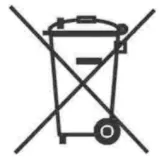
Updated RCM Registration Requirements
The Electrical RegULatory Authorities Council (ERAC) of Australia and New Zealand introduced an upgraded Electrical Equipment Safety System (EESS) platform on October 14, 2024. This initiative marks a significant step towards streamlining certification and registration processes, enabling manufacturers and importers of electrical equipment to comply with regulations more efficiently. The update includes not only a modernized system but also new mandatory information requirements, aimed at improving the transparency and safety of electrical products on the market.
Key Changes in Equipment Registration Requirements
1. Comprehensive Manufacturer Information
Registrants are now requiRED to provide complete manufacturer details, including contact information and the manufacturer’s website. This new requirement is designed to enhance transparency and accountability by allowing regulators and consumers direct access to critical manufacturer information.
2. Detailed Input Specifications
Registrants must provide specific technical data, including:
- Input Voltage
- Input Frequency
- Input Current
- Input Power
By mandating these details, ERAC aims to standardize the quality and accuracy of information provided during the registration process. This ensures that regulatory bodies can more easily verify compliance and confirm products meet safety and performance standards.
3. Updated Safety Risk Classification
Previously, electrical equipment was categorized into three risk levels:
- Level 1 (Low Risk)
- Level 2 (Medium Risk)
- Level 3 (High Risk)
The new system introduces a fourth category called “Out of Scope,” which applies to items not fitting traditional risk classifications. This flexible categorization framework ensures that products not strictly falling within the established levels but still requiring regulation can be more clearly classified.
4. Enhanced Testing Report Requirements
When submitting testing reports, registrants must now include:
- Laboratory Name: Identifies the laboratory responsible for the testing.
- Certification Type: Specifies the type of certification held by the laboratory.
- Certification Number: A unique identifier associated with the laboratory’s certification.
- Accreditation Issuance Date: The date the certification was issued.
These additional data points enable ERAC to verify the credibility of testing laboratories, ensuring they meet stringent quality and safety standards. This enhances the integrity of test results, ensuring only certified bodies issue reports, thereby strengthening confidence in product compliance.
Advantages of the New EESS Platform
The platform upgrade demonstrates ERAC’s commitment to bolstering the electrical equipment safety ecosystem. Through these changes, ERAC aims to:
- Streamline Compliance:
The new system provides a more intuitive and centralized platform for product registration, benefiting manufacturers, importers, and regulators alike.
- Enhance Market Transparency:
The new information requirements mean each product will feature more detailed data, enabling regulators, businesses, and consumers to make more informed decisions.
- Improve Safety Standards:
By ensuring testing reports come from accredited laboratories and include more detailed manufacturer information, ERAC reinforces oversight of electrical equipment safety, potentially reducing risks associated with non-compliant products.
- Accommodate Diverse Product Types:
The addition of the “Out of Scope” category improves the classification of products that do not align with traditional risk levels, enabling ERAC to effectively manage safety requirements for a wider range of electrical equipment.
Preparing for the Transition
With the platform officially launching on October 14, 2024, manufacturers and importers are encouraged to review the new information requirements to ensure they can provide the necessary details for product registration. Additionally, companies should verify that any testing laboratories they work with comply with the new standards, particularly concerning certification details.
Source:
https://www.eess.gov.au/wp-content/uploads/2024/08/EESS-Platform-for-Registration-overview-1.pdf
Email:hello@jjrlab.com
Write your message here and send it to us
 WEEE Registration for Waste Electrical &Electr
WEEE Registration for Waste Electrical &Electr
 MSDS Chemical Safety Testing
MSDS Chemical Safety Testing
 What Are the Differences Between UK REACH and EU R
What Are the Differences Between UK REACH and EU R
 E-Cigarette GB 41700 Compliance Testing
E-Cigarette GB 41700 Compliance Testing
 What Are the Testing Items of California Propositi
What Are the Testing Items of California Propositi
 E-Cigarette EU TPD Testing
E-Cigarette EU TPD Testing
 Testing Certification for E-cigarettes Exported to
Testing Certification for E-cigarettes Exported to
 What is Amazon US CPC Certification?
What is Amazon US CPC Certification?
Leave us a message
24-hour online customer service at any time to respond, so that you worry!




